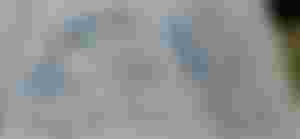Choking or Strangling occurs when a person accidentally draws food into the air passages leading to the lungs or attempts to swallow a piece of food too large to pass through the esophagus. It may occur when a child at play breathes a small object into his larynx.
The person makes a great effort to breathe. He is unable to speak His head is thrown back, his eyes protrude, and his face becomes bluish red. If his air passages are completely closed, he soon collapses and will die within minutes if he does not receive help.
Food choking is said to be the sixth most common cause of accidental death. In middle aged and elderly people, death from food choking is easily mistaken for heart attack.
WHAT TO DO
There are 3 approved maneuvers for rendering first aid to the choking person. These are (1) BACK BLOWS, (2) EPIGASTRIC THRUST, and (3) FINGER PROBE.
BACK BLOWS
This maneuver requires the operator to.use the heel of his hand to deliver a series of rapid whacks to the victim's spine between shoulder blades. This may be done with the victim standing, sitting, or lying on his side. The blows should be forceful enough to jar the victim's body and thus, hopefully, to dislodge the object that obstructs his air passages. A gentle modification of the maneuver may be used in the case of an infant by supporting the infant, face down, on one's forearm. The infant's head should not be lowered below the level of his body, however, if he is still able to breathe, even partially, when in the upright position. Only when he is unable to breathe at all should his head be held low.

Epigastric Thrust (Heimlich Maneuver)
There is some air in the lungs even when a person's air passages are closed. The epigastric trust maneuver is designed to force this residual air out of the lungs so quickly that it pushes the material trapped in the throat upward into the mouth. This is done by making swift pressure upward through the soft tissue of the "EPISGASTRIUM" that part of the front portion of the body wall just below the breastbone and between the lower ribs. The pressure forces the diaphragm upward, compressing the lungs, forcing the air upward through the air passages.
The maneuver can be performed with the victim's standing, sitting or lying on his back. When the choking person is standing or sitting, the.operator works from behind. He wraps his arms around the victim's waist, placing the thumb side of one fist against the victim's abdomen just above the navel and just below the ribs. He the grasps this fist with his other hand and makes a quick upward thrust. This may be repeated if not unsuccessful the first time.
When the victim is lying on his back, this is performed as the operator kneels beside the victim or straddles his hips. He places one hand on top of the other with the hell of the lower located slightly above the victim's navel and just below the ribs. The operator then rocks forward as he makes a quick upward thrust in the midline of the victim's body.

Finger Probe
This is especially useful when a limp of food or other firm object is lodged in the victim's mouth widely, grasp the tip of his tongue through the fold of handkerchief, and pull the tongue well forward. Pass the forefinger of the other hand over the tongue and along the side (not the middle) of the victim's throat far enough to reach the edge of the obstructing object. (If the finger were pushed into the midline of the victim's throat, it might push the obstructing object further into air passages.) Then with a sweeping motion of the finger into the victim's mouth.
Even though the victim appears to breathe normally again, he should be seen by a physician to determine whether there has been any damage to his tissues by the maneuvers used to restore breathing.




on partial choking, don't give back blows as the foreign body might go deeper and become a total obstruction,.so ask the person if he is choking and instruct him to cough it up hard like trying to get out a phlegm. however the aforementioned manuevers are performed when a person choking is in severe case wherein the symptoms the article states are seen